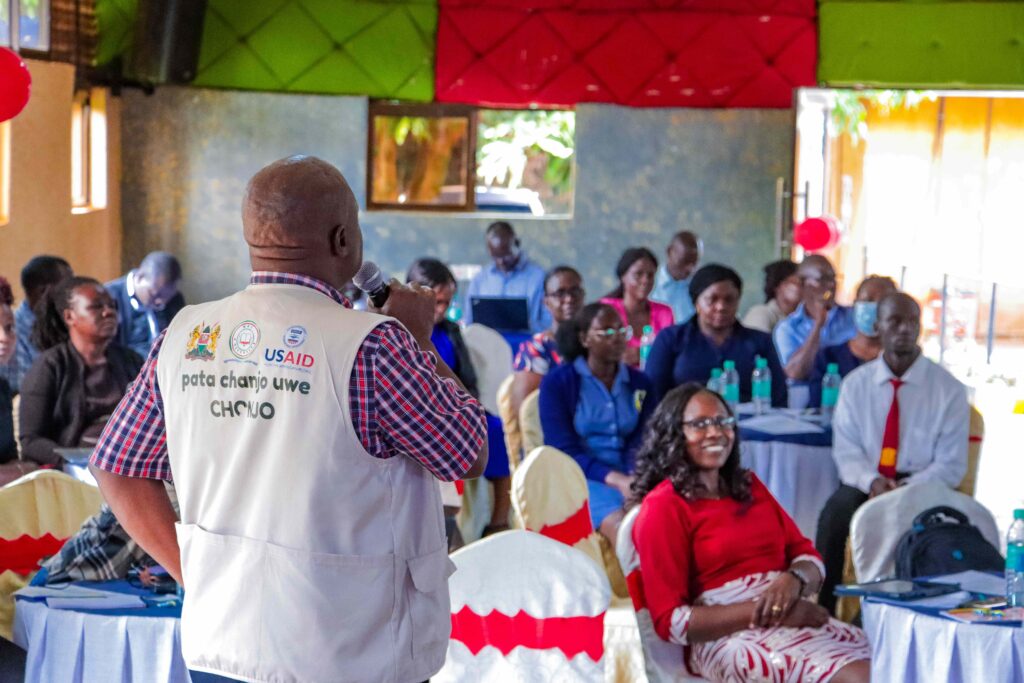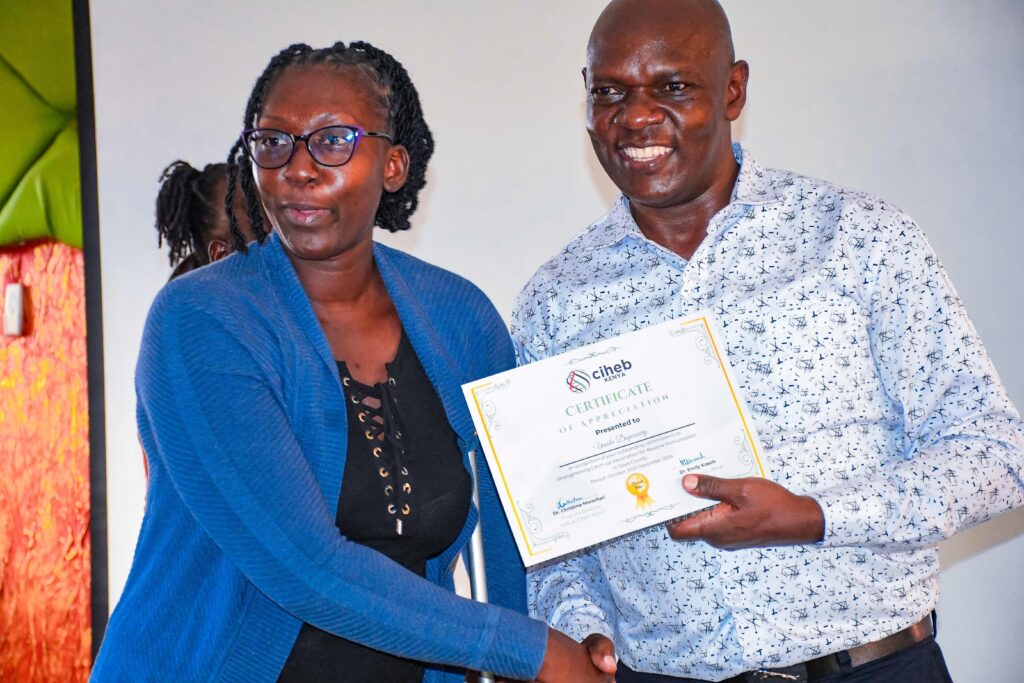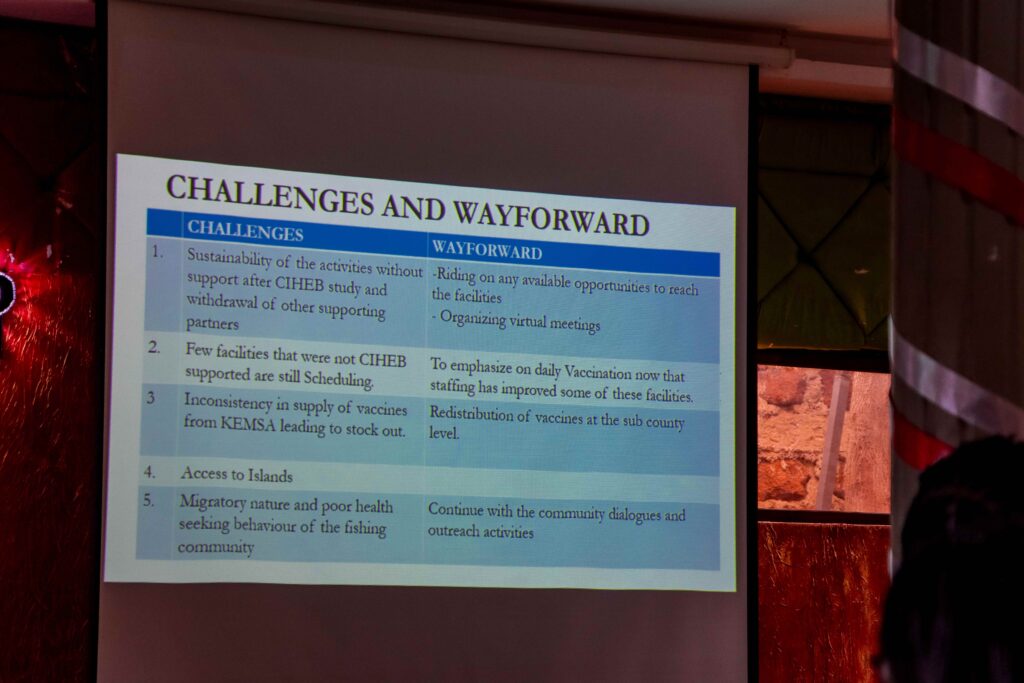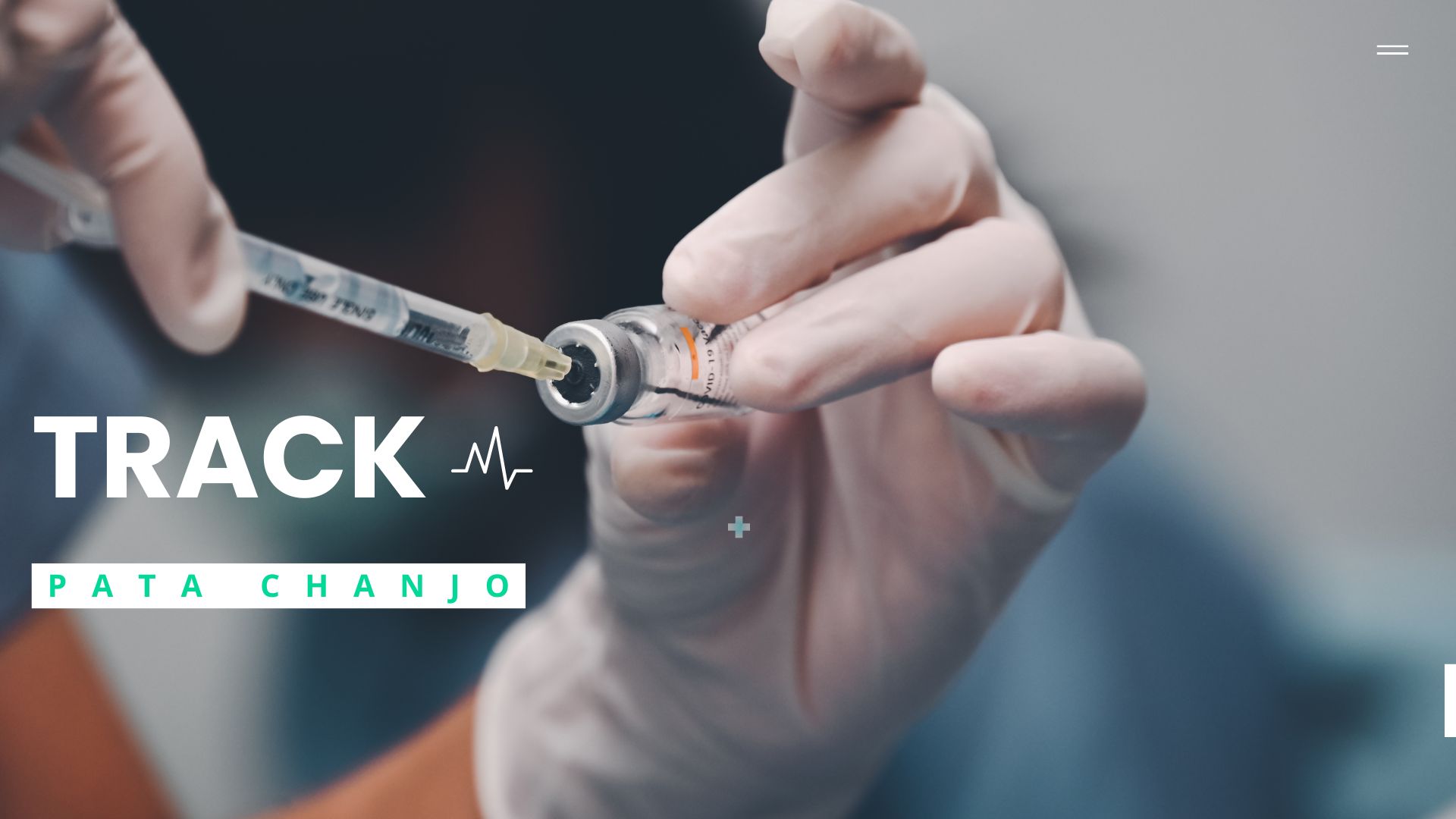Siaya County has turned the tide in childhood immunization, showing that with the right approach, no child should miss life-saving vaccines. Findings from the routine immunization project, disseminated on Thursday, March 27, 2025, reveal that the county has made remarkable progress in childhood immunization with notable gains. The study evaluated the effectiveness of integrating catch-up vaccination into routine immunization services in Siaya County, Western Kenya. A mixed methods approach was employed, comparing baseline and endline data from 55 health facilities and home-based records, Key informant interviews from healthcare workers HCWs) and caregivers. The project primarily assessed changes in coverage for Pentavalent vaccine doses (Penta 1, Penta 2, and Penta 3), Measles Rubella (MR) vaccine doses (MR1, MR2), dropout rates, and health system capacity to institutionalize catch-up vaccination. Baseline data indicated gaps in immunization coverage, with 88.9% of children receiving Penta 1, but only 75.9% completing Penta 3. For the MR vaccine, 51.5% of the children received MR1, but only 19.3% received MR2.

Following the implementation of catch-up vaccination strategies, endline results demonstrated significant improvement with Penta 1 coverage increasing by 9.8% and Penta 3 coverage rising by 18.4%, reducing the dropout rate from 14.6% to 4.5%. In addition, MR1 coverage increased by 15%, and MR2 coverage rose by 17.5%, reducing the dropout rate to 44.6% from 62.5. Furthermore, the proportion of children fully immunized by 12 months of age increased from 44.9% at baseline to 67.3% at end line, suggesting enhanced adherence to the immunization schedule.

Health system strengthening played a crucial role in these achievements. The study documented a general increase in HCW capacity delivery of immunization services. At baseline, 89% of HCWs believed a single dose of MR vaccine was not enough to fully protect a child against MR disease. At endline this proportion increased to 96%. Additionally, 67% of HCWs indicated that only one child needed to be present to open an MR vaccine vial at baseline and increased to 95% at endline. Vaccine availability at health facilities improved, with stockout of vaccines decreasing from 47% at baseline to 39% at endline. However, challenges persisted, including logistical constraints in vaccine availability and MCH booklets.With support from Ciheb-Kenya’s TRACK program and in collaboration with the National Vaccines and Immunization Program (NVIP) and Siaya County Health teams, the county implemented catchup vaccination strategies aimed at improving immunization coverage among under five children.

How Siaya Made It Happen?
Siaya county’s success stems from a mix of simple community-driven and data-informed strategies:
- Capacity building of health care workers: A well-trained workforce is at the heart of any successful immunization program. The TRACK program trained 79 healthcare workers in operational immunization procedures and sensitized over 1,100 more through on-the-job mentorship and continuous medical education.
- Routine Screening for Immunization status: Every child visiting health facilities, regardless of the service sought, was screened for immunization status. This ensured that no child missed an opportunity to get vaccinated.
- Defaulter Tracing & Community Engagement – Community Health Promoters (CHPs) conducted household screening to identify and refer children who had missed routine vaccines. A total of 3,944 defaulting children were line-listed, with 82% successfully traced, and 75% receiving their missed vaccines through active follow-ups.
- Catch-Up Campaigns: This was largely driven by routine screening at health facilities, where all under-five children visiting for any service were assessed for their immunization status. Additionally, defaulter tracing by CHPs ensured that children who had missed their doses were identified and linked back to health facilities for vaccination. A total of 30,336 children received catch-up doses over the 12 months of strategy implementation.
- Caregiver Engagement & Awareness: Working with local leaders, CHPs, and early childhood development (ECD) officers, the county spread awareness on the importance of timely immunization to the caregivers. This helped address vaccine hesitancy and encouraged more parents to take their children for routine immunizations.
- Enhanced Data Use & Monitoring – Improved record-keeping, including the distribution of updated immunization registers, enhanced vaccine tracking and ensured accurate reporting for better planning. Additionally, bi-monthly data reviews and community feedback helped identify immunization gaps, enabling targeted interventions to improve service delivery.

A Model for Other Counties
This study provides empirical evidence that integrating catch-up vaccination within routine immunization services significantly enhances vaccine coverage, reduces dropout rates, and improves timeliness of immunization. The observed gains highlight the feasibility of institutionalizing catch-up vaccination as a long-term strategy to close immunization gaps in low-resource settings. The gains from Siaya County have caught national attention, with other counties encouraged to follow its example. The impact of these efforts has been recognized nationally, with Siaya County emerging as a model for catch-up immunization strategies in Kenya. During the dissemination meeting, Dr. Nancy Olunga, Acting County Director of Medical Services, applauded the collaboration between the county, Ciheb-Kenya, US Centers for Disease Control and other stakeholders in improving healthcare services.
“Sustained investment in community-driven healthcare initiatives will ensure that these gains are not only maintained but expanded to reach every child in Kenya,” Dr. Olunga pointed.

Siaya’s journey proves that practical solutions and teamwork can make a real difference. By staying on this path, the county is ensuring that more children grow up healthy, protected from preventable diseases, and ready for a brighter future. The success highlights the power of innovation, collaboration, and community involvement in strengthening public health. By maintaining this momentum, the county is not only securing a healthier future for its children but also providing a blueprint for other regions to follow.
Link to the photos
https://ciheb-kenya.pixieset.com/ricountydisseminationmeetingtrack/

